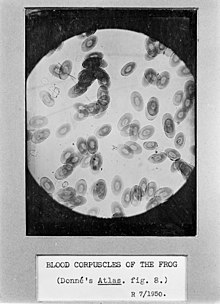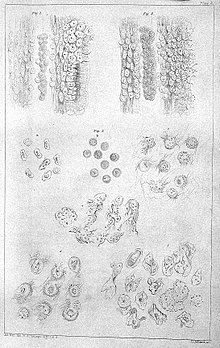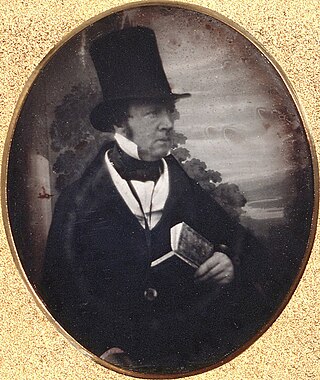
William Henry Fox Talbot FRS FRSE FRAS was an English scientist, inventor, and photography pioneer who invented the salted paper and calotype processes, precursors to photographic processes of the later 19th and 20th centuries. His work in the 1840s on photomechanical reproduction led to the creation of the photoglyphic engraving process, the precursor to photogravure. He was the holder of a controversial patent that affected the early development of commercial photography in Britain. He was also a noted photographer who contributed to the development of photography as an artistic medium. He published The Pencil of Nature (1844–1846), which was illustrated with original salted paper prints from his calotype negatives and made some important early photographs of Oxford, Paris, Reading, and York.
Celluloids are a class of materials produced by mixing nitrocellulose and camphor, often with added dyes and other agents. Once much more common for its use as photographic film before the advent of safer methods, celluloid's common contemporary uses are for manufacturing table tennis balls, musical instruments, combs, office equipment, fountain pen bodies, and guitar picks.

The collodion process is an early photographic process. The collodion process, mostly synonymous with the "collodion wet plate process", requires the photographic material to be coated, sensitized, exposed, and developed within the span of about fifteen minutes, necessitating a portable darkroom for use in the field. Collodion is normally used in its wet form, but it can also be used in its dry form, at the cost of greatly increased exposure time. The increased exposure time made the dry form unsuitable for the usual portraiture work of most professional photographers of the 19th century. The use of the dry form was mostly confined to landscape photography and other special applications where minutes-long exposure times were tolerable.
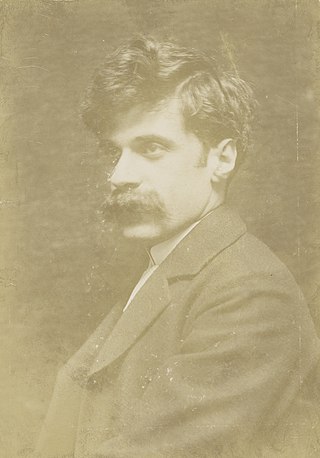
Collodion is a flammable, syrupy solution of nitrocellulose in ether and alcohol. There are two basic types: flexible and non-flexible. The flexible type is often used as a surgical dressing or to hold dressings in place. When painted on the skin, collodion dries to form a flexible nitrocellulose film. While it is initially colorless, it discolors over time. Non-flexible collodion is often used in theatrical make-up. Collodion was also the basis of most wet-plate photography until it was superseded by modern gelatin emulsions.

The American Civil War was the most widely covered conflict of the 19th century. The images would provide posterity with a comprehensive visual record of the war and its leading figures, and make a powerful impression on the populace. Something not generally known by the public is the fact that roughly 70% of the war's documentary photography was captured by the twin lenses of a stereo camera. The American Civil War was the first war in history whose intimate reality would be brought home to the public, not only in newspaper depictions, album cards and cartes-de-visite, but in a popular new 3D format called a "stereograph," "stereocard" or "stereoview." Millions of these cards were produced and purchased by a public eager to experience the nature of warfare in a whole new way.

A tintype, also known as a melainotype or ferrotype, is a photograph made by creating a direct positive on a thin sheet of metal, colloquially called 'tin', coated with a dark lacquer or enamel and used as the support for the photographic emulsion. Tintypes enjoyed their widest use during the 1860s and 1870s, but lesser use of the medium persisted into the early 20th century and it has been revived as a novelty and fine art form in the 21st.

The history of photography began with the discovery of two critical principles: camera obscura image projection and the observation that some substances are visibly altered by exposure to light. There are no artifacts or descriptions that indicate any attempt to capture images with light sensitive materials prior to the 18th century.
John Benjamin Dancer was a British scientific instrument maker and inventor of microphotography. He also pioneered stereography.

Richard Leach Maddox was an English photographer and physician who invented lightweight gelatin negative dry plates for photography in 1871.
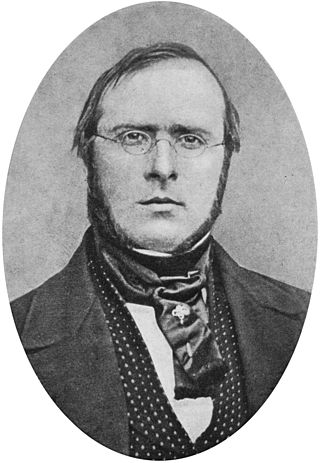
Augustus Volney Waller FRS was a British neurophysiologist. He was the first to describe the degeneration of severed nerve fibers, now known as Wallerian degeneration.

Désiré Charles Emanuel van Monckhoven (1834–1882) was a Belgian chemist, physicist, and photographic researcher. He was also an inventor and author.

Walter Bentley Woodbury was an inventor and pioneering English photographer. He was an early photographer in Australia and the Dutch East Indies. He also patented numerous inventions relating to various aspects of photography, his best-known innovation being the woodburytype photomechanical process.
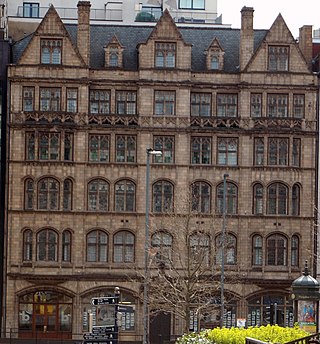
Queen's College was a medical school in central Birmingham, England, and a predecessor college of the University of Birmingham. It was founded by surgeon William Sands Cox in 1825 as The Birmingham Medical School, a residential college for medical students. Cox's ambition was for the college to teach arts, law, engineering, architecture and general science. It was the first Birmingham institution to award degrees, through the University of London.

James Ambrose Cutting (1814–1867) was an American photographer and inventor, sometimes called the inventor of the Ambrotype photographic process.
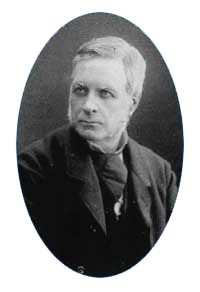
René Prudent Patrice Dagron was a French photographer and inventor. He was born in Aillières-Beauvoir, Sarthe, France. On 21 June 1859, Dagron was granted the first microfilm patent in history. Dagron is also considered the inventor of the miniature photographic jewels known as Stanhopes because a modified Stanhope lens is used to view the microscopic picture attached to the lens. He is buried at Ivry Cemetery, Ivry-sur-Seine.
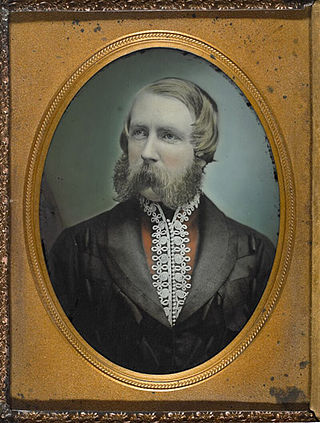
Farnham Maxwell-Lyte FRSC was an English chemist and the pioneer of a number of techniques in photographic processing. As a photographer he is known for his views of the French Pyrenees.

John Francis Hall-Edwards FRSE was a British medical doctor and pioneer in the medical use of X-rays in the United Kingdom.

Robert Jefferson Bingham was an English pioneer photographer, mainly active in France, making portraits and reproductions of paintings. He is one of the first photographers to use and write about the collodion process, which he claimed to have invented.

The conservation and restoration of photographic plates is caring for and maintaining photographic plates to preserve their materials and content. It covers the necessary measures that can be taken by conservators, curators, collection managers, and other professionals to conserve the material unique to photographic plate processes. This practice includes understanding the composition and agents of deterioration of photographic plates, as well as the preventive conservation and interventive conservation measures that can be taken to increase their longevity.
Photo-crayotypes were an artistic process used for the hand-colouring of photographs by the application of crayons and pigments over a photographic impression.
